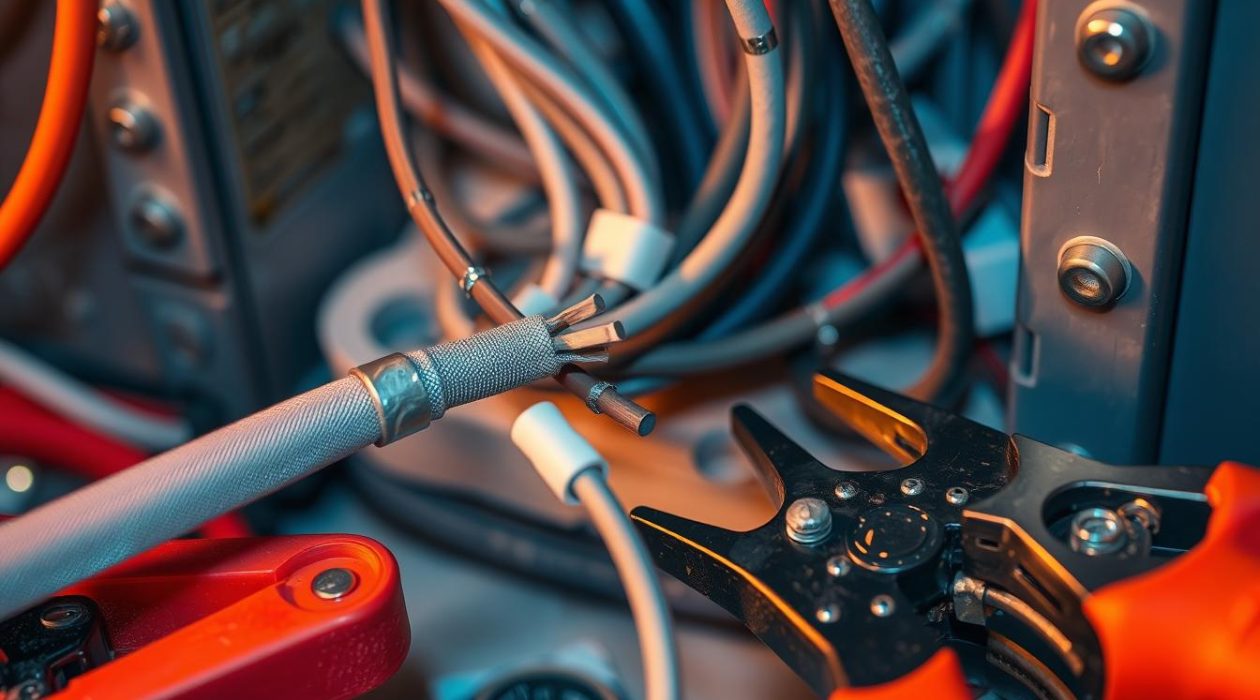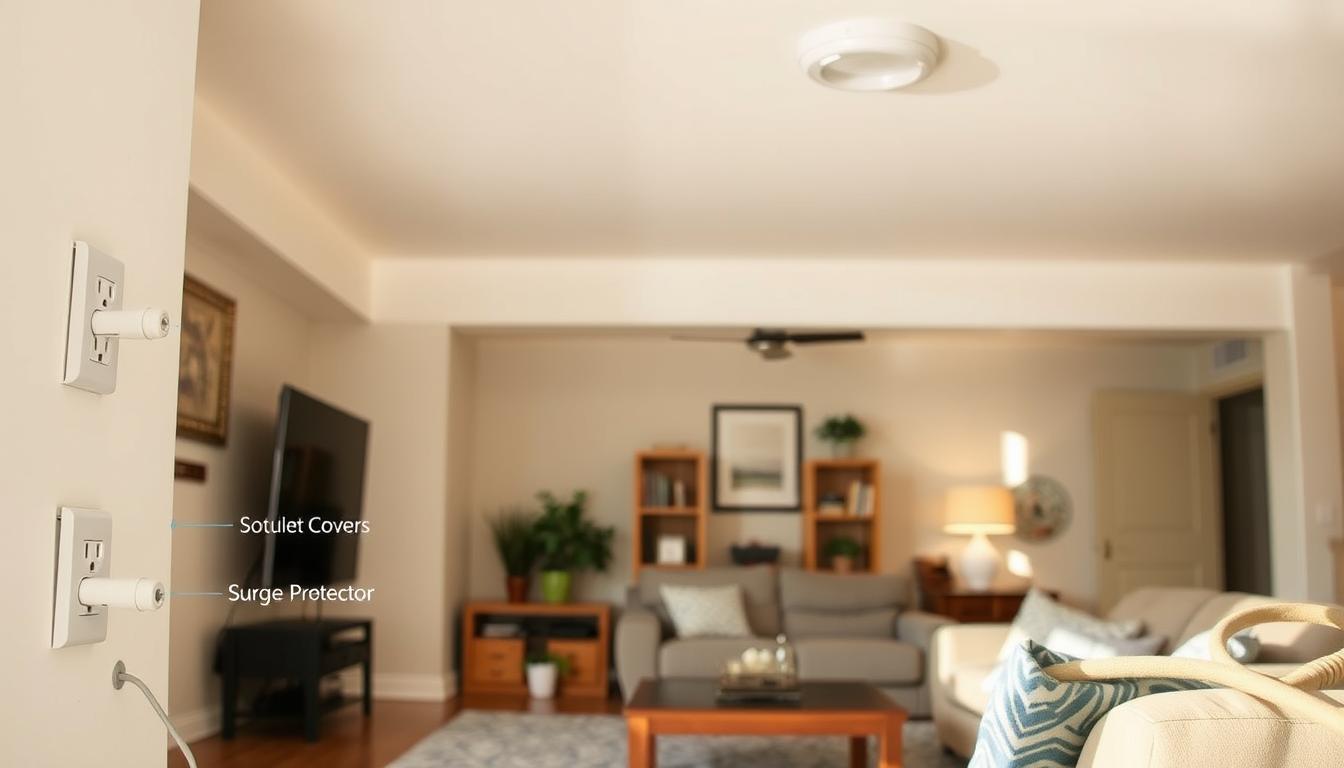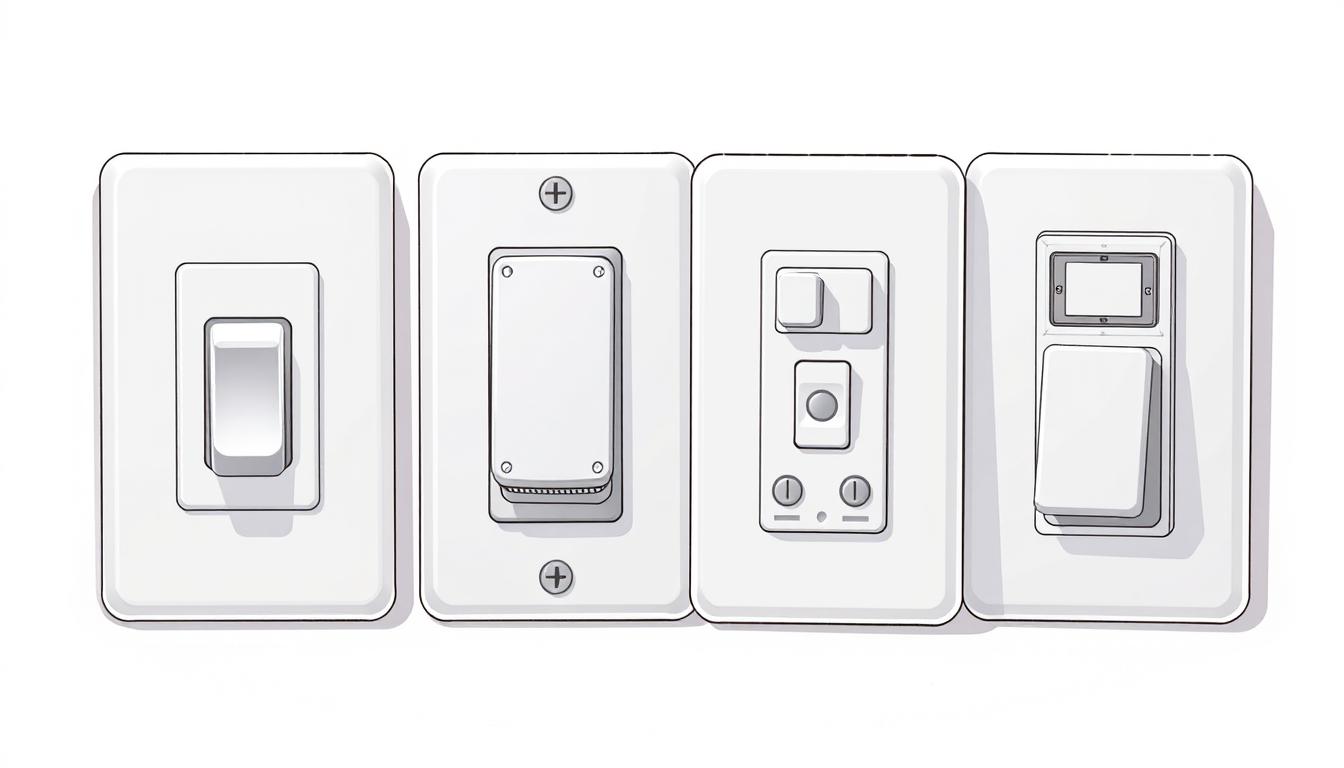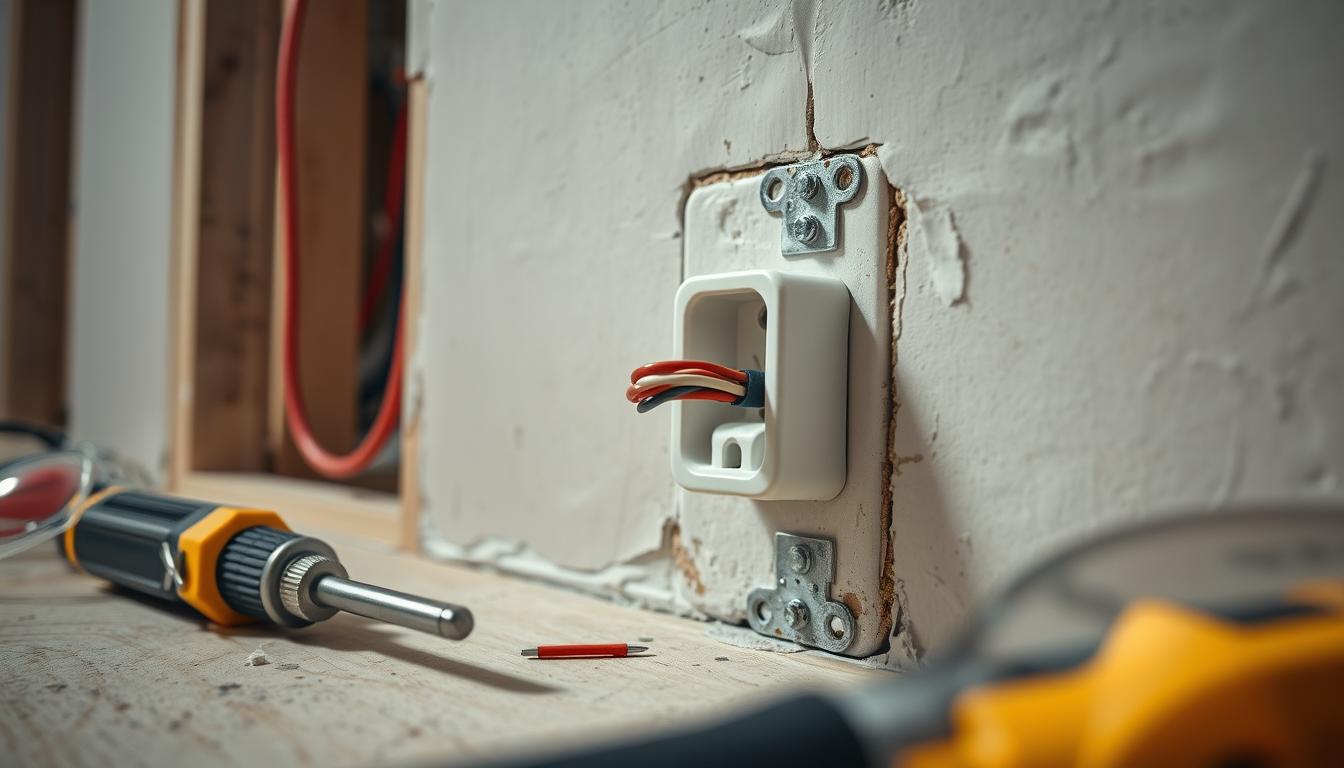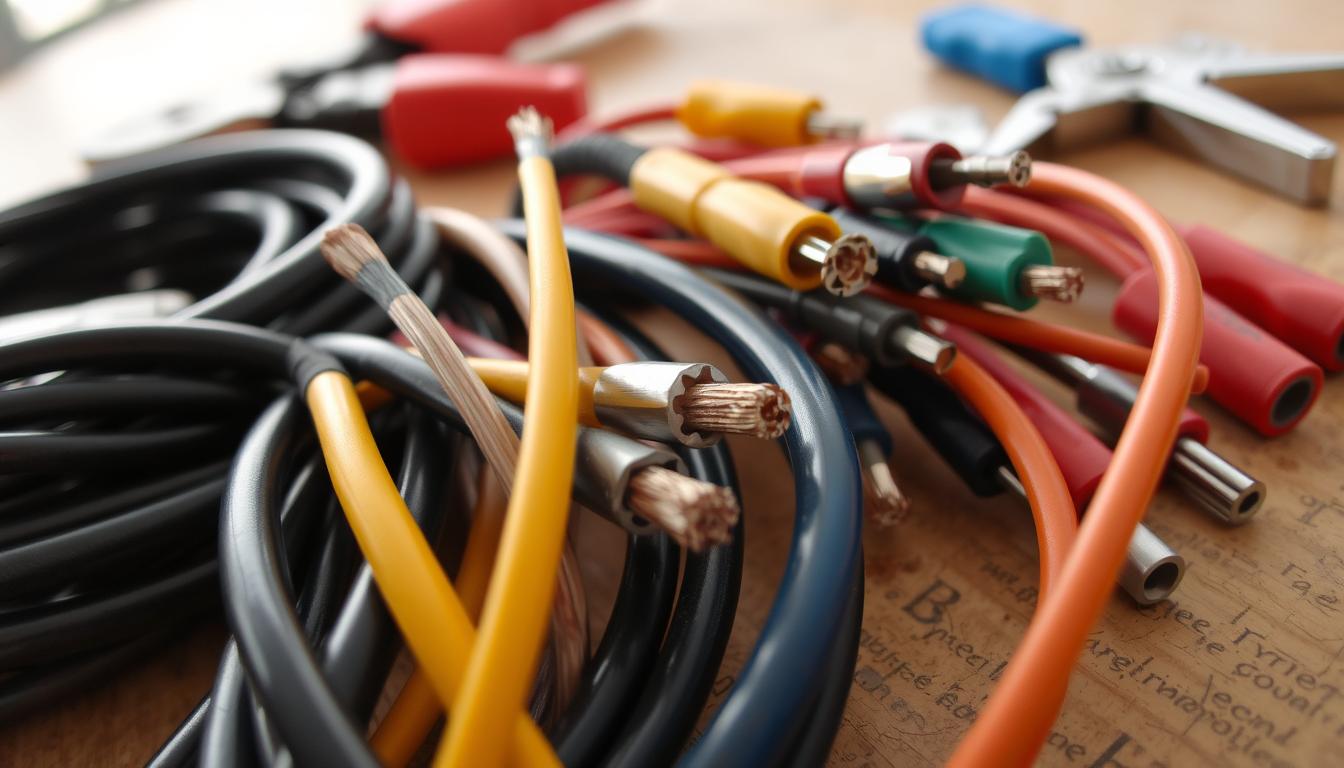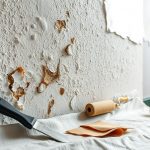Aluminum wiring was once popular in homes because it was cheaper. But, it’s now known to be a fire hazard. Homeowners need to know about wire safety, which is key for those with aluminum wiring.
This guide will help you understand and deal with aluminum wiring. We’ll cover how to identify it and find solutions. This way, you can keep your home and family safe with the right aluminum remediation and wire safety steps.
Homeowners with aluminum wiring should know the risks. Taking steps to fix these issues is important. By focusing on wire safety and aluminum remediation, you can lower the risk of fires. This keeps your home safe and secure.
Key Takeaways
- Aluminum wiring poses significant fire risks if not properly maintained
- Wire safety is crucial for homeowners with aluminum wiring
- Aluminum remediation is a necessary step to ensure home safety
- Understanding the importance of wire safety can help prevent electrical fires
- Homeowners should prioritize aluminum remediation to protect their properties and families
- Effective aluminum remediation and wire safety measures can provide peace of mind for homeowners
Understanding Aluminum Wiring in Homes
Aluminum wiring was used in homes from the 1960s to the 1970s. It was cheaper than copper wiring. But, it has caused many electrical hazards over time. It’s important to upgrade wiring to keep homes safe.
The high demand for copper during World War II led to a shortage. Aluminum became a cheaper alternative for wiring. But, it’s more likely to overheat, corrode, and cause fires than copper.
History of Aluminum Wiring Use
Aluminum wiring was common in homes from the 1960s to the 1970s. It was seen as a cost-effective option. But, it has caused many electrical hazards, like fires and electrocution. Homeowners with aluminum wiring should think about upgrading to stay safe.
Why Aluminum Was Originally Chosen
Aluminum was chosen for its lower cost and availability. At the time, it seemed like a good choice. But, its risks and limitations are now clear. Upgrading wiring is key to safety.
Periods When Aluminum Wiring Was Common
Aluminum wiring was most common in the 1960s and 1970s. If your home was built then, check your wiring for hazards. Upgrading can prevent fires and keep you safe.
How to Identify If Your Home Has Aluminum Wiring
Finding out if your home has aluminum wiring can be tough. But it’s key for keeping your home safe. Look for signs like its silver color or aluminum markings on the wiring.
To see if your home has aluminum wiring, follow these steps:
- Check the electrical panel for aluminum wiring
- Look for aluminum markings on the wiring
- Check the color of the wiring, as aluminum wiring is typically silver in color
Identifying aluminum wiring needs a careful look. Homeowners might need a pro electrician to check their home’s wiring. This is where safety solutions kick in. A pro can give a detailed check and suggest fixes to keep your home’s wiring safe.
By identifying and fixing aluminum wiring, homeowners can rest easy. They know their home is safe from dangers. Regular checks and upkeep can also stop electrical problems. This keeps your home’s wiring working well and safely.
The Risks Associated with Aluminum Wiring
Aluminum wiring can be dangerous for homeowners. It often overheats and can start fires. This happens because of bad connection methods that cause resistance and heat.
So, wire replacement is often needed to keep homes safe.
Some common problems with aluminum wiring include:
- Overheating connections
- Corrosion at connection points
- Damage to wire insulation
Homeowners should watch for signs like flickering lights, warm outlets, or burning smells. These could mean there’s a problem with the wiring. If you see these signs, get a professional electrician to check it out. They can tell you if you need wire replacement or repairs to keep your home safe.
Knowing the dangers of aluminum wiring helps homeowners stay safe. They should understand the need for proper wire replacement and connection methods. This can prevent fires and keep everyone safe.
| Risk Factor | Description |
|---|---|
| Overheating | Aluminum wiring can overheat, causing fires or damage to surrounding materials. |
| Corrosion | Corrosion at connection points can increase resistance and lead to overheating. |
| Insulation Damage | Damage to wire insulation can expose conductors, leading to short circuits or fires. |
Professional Assessment and Inspection Process
When dealing with aluminum wiring, a professional assessment is key. This step involves a detailed check of the wiring system for electrical hazards. A licensed electrician will first visually inspect the wiring for wear, corrosion, or damage.
They will also use special tools to test the wiring for any issues. This thorough check helps spot any problems that could lead to fires or harm your home’s safety.
During the inspection, the electrician looks for aluminum remediation needs. They check for worn-out connections or corroded wires. They also examine the wiring system’s overall condition, including the panel, outlets, and switches.
This detailed evaluation helps find any electrical hazards. It ensures your home is safe from fires and electrical dangers.
Some common steps in the inspection include:
- Visual examination of the wiring and connections
- Testing of the wiring and electrical components
- Identification of potential electrical hazards
- Recommendations for aluminum remediation and repairs
A professional assessment and inspection are vital for your home’s electrical safety. They help find and fix electrical hazards, preventing fires and protecting your property. If you think your home has aluminum wiring, get a licensed electrician to inspect it. They’ll give you the right advice for repairs and maintenance.
| Inspection Step | Description |
|---|---|
| Visual Examination | Checking for signs of wear, corrosion, or damage |
| Testing | Using specialized equipment to test the wiring and detect potential issues |
| Identification of Hazards | Identifying potential electrical hazards and recommending repairs |
Available Solutions for Aluminum Wiring Problems
Dealing with aluminum wiring requires finding safe and efficient solutions. Upgrading wiring is key to avoiding hazards and ensuring safety. Homeowners can pick between full replacement or partial fixes, based on their needs and budget.
Keeping safety in mind is crucial when fixing aluminum wiring issues. It’s important to check the wiring for damage and fix it to avoid fires or shocks. With the right safety measures, homeowners can feel secure about their home’s electrical system.
Complete Replacement Options
Replacing all aluminum wiring with safer materials is often the best choice. This might cost more, but it’s a long-term fix that removes all risks. It’s a solid investment for your home’s safety.
Partial Remediation Methods
Fixing only certain parts of the wiring can be cheaper. But, it might not get rid of all risks. It’s wise to talk to a licensed electrician to find the best fix for your home.
Addressing aluminum wiring problems means focusing on safety and upgrading your wiring. Taking these steps helps protect your home and ensures a safe, efficient electrical system.
Understanding Aluminum Wire Connections
Aluminum wire connections can overheat and cause fires. It’s vital to use the right connection methods to avoid these risks. When replacing wires, knowing how to do it safely is key.
Some important things to think about for aluminum wire connections are:
- Choosing materials that won’t corrode and ensure a strong connection
- Installing wires correctly to prevent overheating and damage
- Checking connections often for wear or damage
Understanding the right connection methods and wire replacement helps homeowners stay safe. They should work with licensed electricians who know how to handle aluminum wiring.
Replacing wires is a complex task that needs special tools and skills. Homeowners should focus on safety by hiring professionals. They can make sure aluminum wire connections are done right.
| Connection Method | Benefits | Risks |
|---|---|---|
| Twist-on connectors | Easy to install, compatible with aluminum wiring | Can overheat if not installed properly |
| Crimp connectors | Secure connection, resistant to corrosion | Requires specialized tools and expertise |
Safety Standards and Regulations for Aluminum Wiring
Safety standards and regulations are key when dealing with aluminum wiring. Homeowners need to know the current building codes to keep their homes safe. Aluminum remediation is important to lower the risk of electrical fires and other hazards.
Some key considerations for homeowners include:
- Regular inspections to identify potential electrical hazards
- Upgrading to copper wiring or using aluminum remediation methods to reduce risks
- Staying informed about current building codes and compliance requirements
Insurance companies also consider safety standards and regulations for aluminum wiring. By fixing aluminum wiring issues, homeowners can lower their insurance premiums. Electrical safety is a top priority, and aluminum remediation is a vital step in achieving it.
Current building codes require homeowners to take specific measures to mitigate electrical hazards associated with aluminum wiring. These measures include:
| Measure | Description |
|---|---|
| Aluminum remediation | Upgrading or repairing aluminum wiring to reduce electrical hazards |
| Regular inspections | Regularly inspecting aluminum wiring to identify potential electrical hazards |
| Compliance with building codes | Ensuring that aluminum wiring meets current building codes and regulations |
DIY vs Professional Aluminum Remediation
Homeowners often debate whether to fix aluminum wiring themselves or call a pro. It’s important to know when DIY is safe and when to seek professional help. Safety solutions are key to avoid dangers, and sometimes, upgrading wiring is needed for home electrical safety.
Checking your wiring is a good first step. But, big problems need a licensed electrician’s touch. Here’s what to keep in mind:
- Homeowners can check their wiring for signs of trouble like overheating or rust.
- They can also reduce risks by not overloading circuits and keeping things clean.
- But, for upgrading wiring or complex fixes, a pro is needed to do it right and safely.
Electricians are trained to handle aluminum wiring fixes. They offer safety solutions that fit your home’s needs. They make sure your electrical system is safe and meets current standards.
In summary, while some tasks are DIY-friendly, big fixes need a pro. Knowing when to DIY and when to call a pro helps keep your home safe and working well.
| Task | Recommended Approach |
|---|---|
| Minor inspections | DIY |
| Complex repairs or upgrades | Hire a professional electrician |
Maintaining Aluminum Wiring Systems
Regular checks are key to keeping wire safety in homes with aluminum wiring. This means looking for signs of wear and making sure connections are right. Getting your electrical system checked often can stop dangers and give you peace of mind.
To keep aluminum wiring systems in good shape, here’s what you can do:
- Check the wiring system often for wear or damage
- Make sure all connections are tight and safe
- Book regular electrical checks with a certified electrician
By doing these things and focusing on wire safety and the right connection methods, you can avoid electrical risks. This makes your home’s electrical system safe and dependable.
Conclusion: Ensuring Your Home’s Electrical Safety
We’ve looked into the problems with aluminum wiring. It’s clear how important it is to fix these issues. This keeps your home and family safe.
Knowing about aluminum wiring’s history and risks helps you make smart choices. Regular checks and quick fixes are key. Working with licensed electricians and watching for warning signs also helps a lot.
Electrical safety is a big deal for your home’s future. With the right steps, you can handle aluminum wiring safely. This keeps your home’s electrical system working well.
